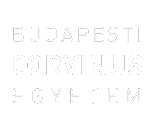Papp, Eszter (2021) Oversexualization of the female body in popular music culture. BA/BSc szakdolgozat, BCE Kommunikáció és Szociológia Intézet, Kommunikáció- és Médiatudomány Tanszék.
|
PDF
- Requires a PDF viewer such as GSview, Xpdf or Adobe Acrobat Reader
1MB |
Absztrakt (kivonat)
The present thesis aims to explore female representations in contemporary music videos within the pop and popular music genre. The research touches upon related themes including popular culture, femininity, gender roles, sexuality and their modes of presentation that prevailing today’s media scene A leading direction is tangible in both media and the advertising industry that involves using explicitly erotic and sexualized imageries for varying purposes. The primary goal of the present thesis is to identify those purposes as well as to measure audience’s reception and attitude towards the phenomenon. During the research the following hypotheses are tested: H1: Projecting hypersexualized images of female pop artists (and women in general) is a powerful instrument for the profit making for the music industry concealed with the ideology of sexual liberation and empowerment. H2: Sexually saturated depiction of women in the musical industry sets cultural norms and reinforces stereotypical narratives on the interaction and conceptualization of women. The research questions introduced in the research are as follows: RQ1: What messages the hypersexual portrayal of women in the popular music industry conveys to viewers? RQ2: Does their sexuality obtain female artists power or is erotic behaviour inevitably linked to women’s musical carrier and recognition within the popular genre? RQ3: What are the historical and cultural grounds for the mainstream representation of women as the object of desire in pop culture, and how are their male counterparts depicted? Throughout the theoretical part of the paper prominent events of media history were introduced based on the works of Barbier & Bertho Lavenir, (2011) and Benjamin (1975) Further on, notions on mass media and media conceptualization and the most influential theories about media effects related to the research topic were elaborated. In order to gain a sophisticated insight, works from the following scholars were incorporated here: Gruys & Siciliano (2015); Luhmann (2000); Foucault (1977); Hartley (2004); Livingstone (2002, 2005); Hepp (2019); Griffin (2011) and Cohen (1963). The importance of media literacy and features of popular culture were described based on literatures of Livingstone (2004); Christ &Potter (1998); Kid (2017) and Neil Postman (2006). How sexuality is portrayed and utilized in the media and advertising relied on thinkers such as Krijnen & Van Bauwel (2015) and Jhally (1990). Further on, feminist theory was introduced to shed light on varying ideologies and concepts around sex, gender, sexuality in relation to media depiction, using the key concepts of Laura Mulvey (1975) and VanDyke (2011). The methodological part consisted of a qualitative online questionnaire that was filled out by 172 participants. The primary aim here was to detect the impact of these explicit representations on individuals’ attitudes, reception, and self-image by showcasing pictures retrieved from pop and pop-rap video clips trending today. A set of categorizations was used to measure individual answers to find answers to the proposed research questions. The findings of the research showed a consistency in how people evaluated the oversexualized images: majority of them regarded images to be purposefully provocative for profit-making; objectifying towards women; setting harmful narratives about gender roles.
| Tétel típus: | BA/BSc szakdolgozat |
|---|---|
| Témakör: | Média és kommunikáció Szociológia |
| Azonosító kód: | 14661 |
| Képzés/szak: | Communication and Media Science |
| Elhelyezés dátuma: | 29 Aug 2022 10:57 |
| Utolsó változtatás: | 08 Szept 2022 08:08 |
Csak a repozitórium munkatársainak: tétel módosító lap

